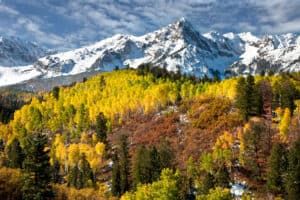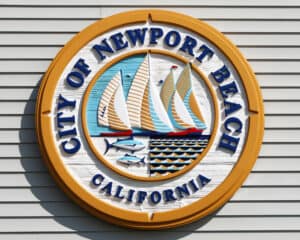
When you think of expensive cities, you probably think of Beverly Hills or New York.
The seemingly underpublicized city of San Jose usually doesn’t come to mind until you remember that the city rests in the futuristic tech hub of Silicon Valley and you see the extremely high costs of living.
Are the high costs worth it for you?
Well, to determine that, you need to know what you get for the price.
We will go over the top 10 reasons San Jose is so expensive so you can decide for yourself.
Why Is San Jose, California So Expensive? (Top 10 Reasons)
1. Number Of Tech Jobs Available

If you want to position yourself for tech job opportunities, you want to settle down in Silicon Valley.
In fact, the esteemed Computing Technology Industry Association (CompTIA) rated San Jose the town with the fourth-best tech index rating in America between the summer of 2019 and the summer of 2020, despite the devastating effect of the Covid-19 pandemic in California.
The experts expect the area to see an 11% increase in jobs by 2025, meaning even if you and other people move to the areas looking for IT work, jobs will be available.
They also point out that IT employees in the area get paid well above average with a median salary of $137,100.
Some of the largest employers in Silicon Valley include:
- Apple: 25,000 local employees
- Google: 25,000 local employees
- Facebook: 17,000 local employees
Even if it takes a while to get your dream job in the industry, you can find work related to what you love to do.
Not only are there plenty of tech and IT jobs, but many people also find the work environment more laid back and enjoyable than most other places.
Google earned the coveted title of the best company to work for in 2019 according to both Glassdoor and Fortune Magazine.
Many people attribute it to the excellent health care and paid family/sick leave, but the beanbag chairs definitely help.
While some people fear artificial intelligence and automation technology may reduce the tech job market, it appears it will contribute to the tech job market for the foreseeable future and even generate $15.7 trillion for the global economy.
2. Inspirational Tech Community

“Succeeding in business is all about making connections” ~Richard Branson
Every industry, tech included, requires collaboration and connections.
Valuable connections can lead to education, mentoring, funding for new projects, and a sense of belonging.
Networking in San Jose, California takes it one step beyond average networking since many of the people in the area are innovators and legitimate geniuses.
If you are lucky enough to work with some of these brilliant minds, you will learn more than a typical office manager who follows someone else’s processes.
The Silicon Valley tech community feeds off of each other and relies on colleagues for advice and feedback.
The idea is to one day learn so much that you make your own valuable contributions and help mentor other ambitious tech employees who are just starting their careers.
Some of the famous mentorship relationships in tech include:
- Mark Zuckerberg of Facebook helped to mentor Reid Hoffman of LinkedIn.
- Adam D’Angelo of Quora helped to mentor Kevin Systrom of Instagram.
- Stewart Butterfield and Catarina Fake of Flickr helped to mentor Rob Kalin of Etsy.
- Warren Buffet helped to mentor Bill Gates.
Making Beneficial Connections
You’d be a fool to live in the area with a dream of working in technology and not take advantage of the networking and mentorship opportunities.
However, this can be difficult for people who don’t have the strongest people skills.
Follow these tips to learn how to establish valuable connections that can even turn into a valuable mentorship:
- Start by developing relationships with peers and management at work.
- Use social media or a blog to talk about your new projects.
- Enjoy social activities unrelated to tech, such as a book club or cooking class.
- Attend networking events.
- Make the first move and follow up.
- Practice your verbal and nonverbal conversation skills.
Picking The Wrong Team
Not all mentorships end on a positive note, though.
The wrong mentor or mentee can end up taking advantage of the situation and leaving the other party in the dust.
For example, many employees looked to stock investors Jordan Belfort and Danny Porush of Stratton Oakmont for guidance in the industry only to find themselves entangled in the pump-and-dump scheme they developed as a get-rich-quick scheme.
Thanks to Belfort and Porush’s mentorship, 131 of their 1,000 employees found themselves prohibited from trading and looking for brand new careers.
Not to mention, both men snitched on colleagues in exchange for a reduced sentence.
Even well-meaning mentors can provide bad information, so it’s also important to have good judgment and only listen to people with proven business savvy.
One would hate to have been the person who advised Blockbuster CEO John Anticoco to not buy a small business named Netflix for $50 million when the opportunity came to him.
Netflix now has a market valuation of $32.9 billion, while Blockbuster slowly drifted away.
Of course, failure and adversity can teach us valuable lessons on what not to do.
3. High Cost Of Tech Products

The newest tech products, such as cell phones and laptops, cost a lot of money.
People want the most advanced software and the features that come with it, even if it’s only marginally better than the previous model.
This demand allows tech companies to sell their products at a large profit margin.
Most people consider new tech products, especially from high-end brands like Apple, to be the best.
Tech represents progress and “keeping up with the Joneses”, so people are willing to get the newest and the latest.
A lot of people also don’t understand technology.
Many of us can make a simple coffee table or knit a hat.
However, how many people can create a modern cell phone from scratch?
Since only a limited number of people have the ability can do this type of work, the other people pay what they ask.
Finally, technology has become a necessity for most people.
Over 80% of the world owns a cellphone.
Jobs that contribute to the creation and servicing of this technology aren’t only valuable to a niche market, such as plastic straws.
Everyone wants the product, and it’s expensive.
That’s why the US tech market is worth an estimated $1.6 trillion (33% of the entire market).
Planned Obsolescence
One reason that the tech industry makes more money involves the concept known as “planned obsolescence”.
Planned obsolescence, or the “expiration date effect”, refers to a business plan that ensures a specific product will become obsolete or break after a certain amount of time, forcing the owner to buy a new one.
The manufacturer creates the product with an expiration date in mind, usually when they are ready to release a new product.
The idea is that the consumer will buy from the same brand.
The company then makes money off the first product then the next sale as well.
One simple example of planned obsolescence outside of the tech industry can be found in many women’s sock drawers: nylons.
Most women know to be careful not to snag their nylons since they tear so easily.
However, they always end up getting a run eventually.
The thing many people don’t know is that there are materials and manufacturing practices that can prevent snags, but the manufacturers don’t utilize those practices since they want people to snag their nylons and buy new ones.
Apply this practice to computers and cell phones.
One’s grandmother, for example, may have an iPhone 6 because she hardly uses it.
However, to use many apps, such as the Amazon shopping app, she must have a phone that has the newest version of iOS (the phone’s operating system).
Apple could allow those apps to run on the old operating system rather easily, but they want her to buy a new phone, even though the one she has is working perfectly fine.
Apple absolutely does this on purpose, and Grandma wisely won’t give in until she needs a new phone.
However, in defense of Apple, who still has an iPhone 6?
4. Educational Opportunities

Located in the center of Silicon Valley, one must assume that residents would have access to high-quality tech education to help them advance in their careers.
The best degrees to consider, especially for a career in the tech industry, include:
- Information Technology
- Computer Science
- Web Development
- Web Design
- Computer Networking
- Cybersecurity
- Database Management
- System Administration
Of course, it’s also important to remember that if you plan to run your own tech company, you not only need to understand technology but also business.
It’s wise to take business classes or double major in business to learn about managing operating costs, efficient operating practices, and leadership skills.
California University Of Management And Technology (CALMET)
CALMET is known for its MBA program as well as its Master of Science program in Computer Science and Information Technology.
However, for undergraduates, the school also offers a great Bachelor’s program in Business Administration.
Some people on the school’s advisory board include Charles Wang, Thomas Blood, Dennis Hungridge, Samuel Tong, and Dennis Sahani.
The tuition for the MBA program comes to a final cost of approximately $16,000.
San Jose State University
San Jose State University is the oldest public university on the West Coast.
This college offers much more than technology and business courses with 143 bachelor’s degree programs and 95 master’s degrees.
The creator of Intel, Brian Krzanich, graduated from San Jose State University along with many other prominent people in the Silicon Valley scene.
The average cost of tuition before aid is slightly above $30,000 per year with the average cost after aid coming to about $15,000 a year.
University Of Silicon Valley
The University of Silicon Valley is a private university for people who enjoy the artistic side of technology.
This school is particularly known for its bachelor’s and master’s programs in:
- Digital animation
- Video game design
- Audio and music production
Another positive aspect of the University of Silicon Valley is the number of women students.
Tech notoriously appeals to males more than females, or at least, it used to.
However, 24% of the population at the University of Silicon Valley is female.
The school also has valuable resources for women who want to break into the tech industry.
5. Weather

Tech company CEOs and innovators like nice weather, too.
In fact, the science-minded population probably appreciates the beauty of the area more than the average person since they understand the processes behind it.
It makes sense that they would choose California.
The average high temperature throughout the year in San Jose is a pleasant 71.5 degrees with an average annual low of 51.4 degrees.
Except for a handful of hot days, most people can’t complain about the weather outside.
No wonder Google lets people work outside from time to time!
6. Proximity To San Francisco

It may surprise you to learn that San Jose actually has a larger population (1.028 million) than the bustling city of San Francisco (875,000), an hour away.
The reason San Francisco feels so much larger is the smaller amount of space for the residents.
While San Jose has more people, they are more spread out like a suburb.
That doesn’t mean that San Francisco doesn’t have a lot to offer!
When you drive over the famous Golden Gate Bridge (and pay the insane $7 toll), you will find yourself in a financial hub.
Outside of the financial district, you will notice a large art scene that creates quite the juxtaposition to the science-minded mentality in San Jose.
This is where famous beatniks and hippies first made their mark. It also has a strong history related to LGBTQ+ rights.
You can enjoy the beauty of the beach city before visiting Alcatraz with enough time to be home for bed.
7. San Jose Landmarks

Having San Francisco so close can make people forget about the amazing landmarks right in San Jose.
While they may not be quite as famous, they certainly offer a lot of culture and entertainment.
Some of the best museums in San Jose include:
- Tech Museum of Innovation
- Rosicrucian Egyptian Museum
- Lick Observatory
- Children’s Discovery Museum of San Jose
You can also find many historical buildings and memorials that represent the city’s Latin Catholic heritage.
There are also numerous parks for children and adults to enjoy, and they get plenty of use thanks to the nearly perfect weather.
8. Progressive Policies

Technology is all about progress and change, so it should come as no surprise that San Jose, California tends to lean toward the more progressive side of politics.
Technology helps propel us as a country in a forward direction.
Many technological advances support eco-friendly goals.
The technology also helps make things more efficient so that new litigation can happen as quickly as possible.
Of course, the large revenue generated by some of the businesses means that you will still find common-minded colleagues if you tend to lean conservative.
However, more people possess a progressive mindset.
Democratic voters make up 72.6% of residents compared to 25.2% of residents who vote Republican.
Only 2.1% of the area’s residents vote Independent.
9. Historical Juxtaposition Of Old West Meets New Tech
![]()
The first people to live in San Jose were Ohlone Native Americans.
However, the Spanish Empire claimed it in 1542, and it remained under Spanish rule for hundreds of years until Americans took over at the end of the Mexican–American War in 1847.
The United States took over right before the Gold Rush in the middle of the 1800s.
Pioneers traveled to the area, bringing industry to the area.
Of course, at the time, things looked more like the grungy Old West than the affluent place it is today.
That doesn’t mean that people in San Jose weren’t innovators, even back then.
In the early 1900s, San Jose was the central location for new technology in air flight, primarily led by John Montgomery.
Today, you can still see the Mexican influence and Old West sense of exploration among the multi-million-dollar homes.
You can even take your electric car to see the trails people used to travel to the area or visit a museum that teaches people about the inventions that came from the area.
10. Media Exposure

The media recently changed the perception of previously disregarded nerds to make them cool (or at least cooler).
More and more movies made nerds the protagonists of the story.
Popular sitcoms The Big Bang Theory and Silicon Valley both take place in California.
As the media continues to perpetuate the connection of successful nerds in Silicon Valley and the surrounding areas, views continued to perpetuate the connection until the area developed the reputation it now has today.
With the reputation of affluence and countless tech start-ups in place, life imitates art (or technology) in San Jose, driving up prices.
Conclusion
San Jose may not fit everyone’s needs.
However, for a certain group, it provides everything they could want and then some.
The prices are nothing compared to the opportunities and inspiration in the area.
However, if you do start to make waves in San Jose, California, don’t mention your idea for an app until you have a solid business plan.



Leave a Reply